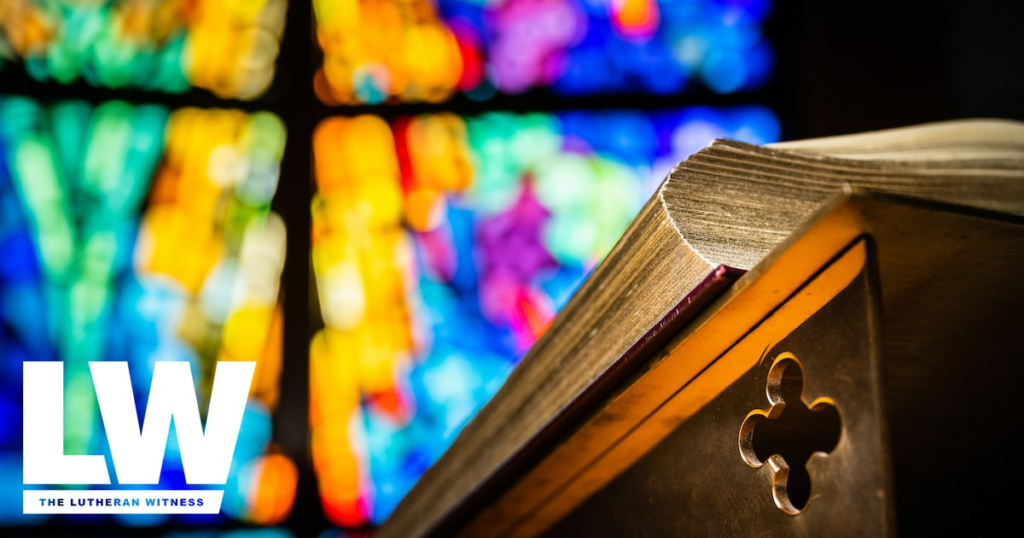by Rev. Travis J. Scholl
If you’ve ever been there, it is impossible to forget Pentecost Day at Redeemer Evangelical Lutheran Church in the Bronx. The church is awash in red— deep, bright, fiery red. The red of vestments and altar linens, the red of balloons and banners, the red of people. Shirts, ties, jackets, dresses, blouses, scarves, hats, shoes: On Pentecost Day, the people of Redeemer are afire in red.
I suspect virtually every congregation has traditions like that, their own particular ways to celebrate special days, practices that simultaneously mark them as unique communities and yet part of the whole body of Christ, the saints of God throughout the world.
After all, this isn’t just Redeemer’s “birthday” they celebrate. It is Pentecost, the birthday of the whole church, whether you wear red or not.
A Celebration of Time
We celebrate the Church Year in part as a celebration of time. Time is God’s gift, and God’s creation sets the rhythms that make time possible. The Church Year is a way of marking time and making time. It is a way of telling time and keeping time. And what is it that we mark and make and tell and keep?
We mark the events of God acting in world history and in our own personal history. We make a place to gather together, to remember and give thanks for what God has done for us. We tell the story of how God is working in our midst. And we keep the vigil for what God will yet do among His people.
The Church Year is for all these things. It is for telling the story of how a God beyond time acts within time to save and restore life. It uses the months and seasons of the calendar to tell the story. Or rather, it tells the story in the seasons of the year and our own lives.
In this way, part of the wisdom of the Church Year’s telling of the story is the way it intertwines my life with the life of the whole earth: springtime and harvest, work and rest, life and death. For my farmer grandfather, these inter-connections were immediate and visceral. For those of us who have moved further and further away from an agrarian way of life, the connections aren’t as obvious. We need to be reminded again and again of how God in and through His creation—in real time—sustains good life and raises new life out of decaying death.
This is also why the Church Year reminds us that time is not a straight line. We revolve through the seasons of the Church Year—like the seasons of winter, spring, summer and fall—to remember that time is a circle, a spiral that revolves around the good news that One who was and is God became man. He lived our human life, yet lived it like no one else ever lived. He died a common death, yet died a death only He could die. And just when we thought the story was over, He rose to raise us up to a life that will never die.
And just when we thought the story was over, He rose to raise us up to a life that will never die. On a Sunday—the day the ancientIsraelites commemorated as the first day when God created heavens and earths—we celebrate the eighth day of the rest of our lives. We live this eighth day in the faith, hope and love that God’s life in Christ always overcomes death. In this way, the Church Year celebrates how every moment of so-called ordinary time becomes extraordinary in the light of God’s love.
The Mysterious Clock
On the one hand, the church’s way of marking time strikes us as profoundly countercultural to all the other ways societies mark time. And indeed it is. The Church Year marks time differently than any other calendar because it tells time according to the mysterious clock of God’s grace in Jesus Christ.
On the other hand, the Church Year also concentrates all the varied energies of culture into a life and rhythm of worship. Down through the ages, the Christian calendar has engaged in a complex interaction with the cultural calendars in which Christianity has found itself. The Church even co-opted pagan celebrations of time, like the winter solstice, to sanctify them for Christian observance. We know this celebration now by the complex celebration that has a culture all its own: Christmas.
The Church Year reminds us that we live virtually all our days in seasons. We live by the seasons of nature. We live by the seasons of our favorite sports teams and whether or not they get to celebrate festival days like the World Series or the Super Bowl. We live by the seasons of our favorite TV shows or the next must-see summer movie. We even live by the ever-changing Google logo marking the virtual days of the Internet.
We live by marking time any way we can. But the Church Year takes the swift flow of time a step farther. The Church Year takes all these seasons of our lives and envelopes them within the time of God. It reminds us—year in, year out—that God has marked all time in the life of Jesus Christ and that the Spirit of God continues to fill time with His presence.
The Church Year makes explicit what perhaps we’ve known all along—that time is told in cycles, that life is never a straight line, that the rhythm of “sunrise, sunset” marks and makes the time to connect us to God and with each other.
—
> read more of Rev. Scholl’s insight on the culture at www.stltoday.com/civilreligion/travis-scholl.
> Read more about the church year
About the Author: The Rev. Travis J. Scholl is managing editor of theological publications at Concordia Seminary.


September 2011





